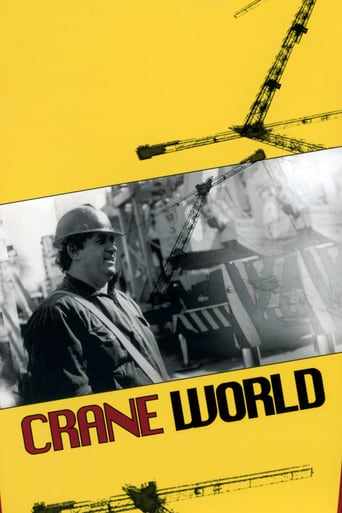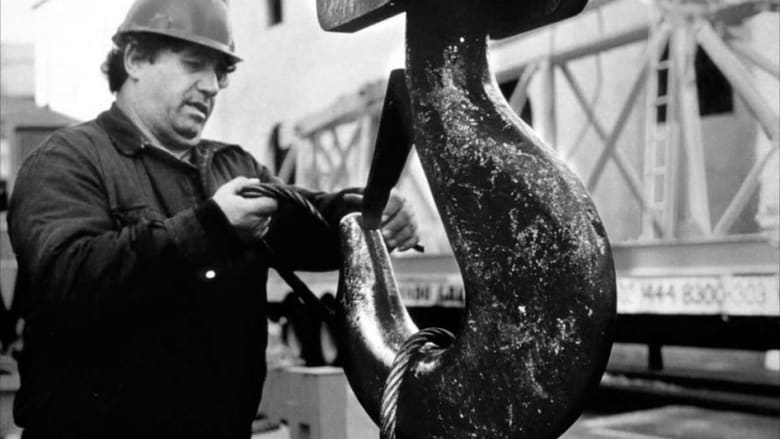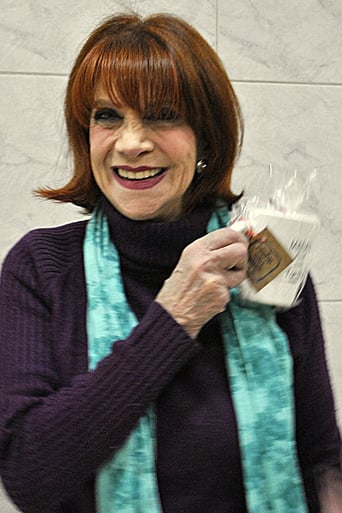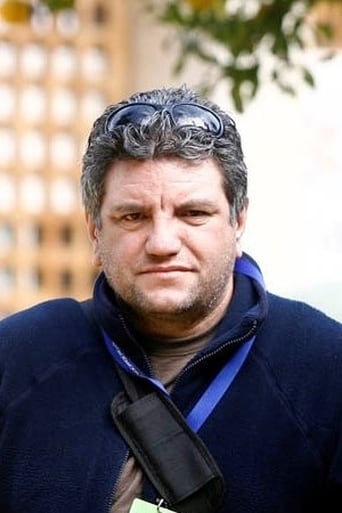

Crane World (1999)
The portrait of a man and his attempts to make things up with life after losing his job.
Watch Trailer
Cast
Reviews
Very Cool!!!
Overrated
It’s not bad or unwatchable but despite the amplitude of the spectacle, the end result is underwhelming.
A terrific literary drama and character piece that shows how the process of creating art can be seen differently by those doing it and those looking at it from the outside.
Director Pablo Trapero's film 'Mundo Grúa' inquires whether one is really on top of the world merely by sitting in a crane which is used to construct sky scrapers ? The answer is in negative as one is on top of the world only if he/she has a respectable job which enables people to lead decent lives. For this film, Argentine actor Luis Margani is excellent as his acting performance makes us wonder how fast the lines between fiction and reality have blurred. Cobi Migliora's black and white photography does wonders to depict an honest account of the life in Buenos Aires. It is said that family is the unit which ties humanity. This is also the case with the protagonist whose immediate family is always around him in the form of a wayward son and an anxious old mother. Mundo Grúa is one of the most original films to have come out of New Argentine Cinema. It depicts how severely ordinary people are affected by employment crisis. Their plight is further worsened when there is no guarantee that they would be provided with decent meals on different construction sites located all over Argentina. The viewers get to see how choices have to be made by ordinary people in order to be alive. Despite its serious theme, this film does not lose focus even while depicting scenes of humor.
The gorgeous, slightly grainy, black and white photography of this film would seem to come from earlier decades. The characters, buildings and vehicles could belong in the 70s or early 80s. Only later did it dawn on me that the story takes place during the tough Argentine economic crisis of the late 90s and early 00s. The film shares a visual look with some early Scorcese work, although its social theme is perhaps more reminiscent of the Italian neorealist films of the 40s and 50s.Crane World also reminds me a bit of Five Easy Pieces, with Jack Nicholson, which also deals with a sensitive musician who puts his music aside in order to work in construction (even if the circumstances surrounding their main characters are very different). Unlike Robert Dupea (Nicholson's role in Five Easy Pieces), Crane World's Rulo has a beautiful sense of humor and doesn't take himself terribly seriously. He's a dreamer confronted by reality, but also an every day man navigating life as fluidly as he can. As the going gets tough, he makes an effort to keep his chin up and find serenity within his struggle.The film doesn't provide big explosions or fireworks. It's a quiet and very elegant piece of work. What consistently amazes about it from start to finish is how natural and spontaneous it feels. One might as well be watching a documentary or be dreaming.Unfortunately for non-Spanish speakers, some of the magic will be lost in translation. Much of the melody comes from the Argentine dialogue that the actors produce so effortlessly. Still, there's no good reason to miss this touchingly eloquent jewel. I can only wonder why it's not better known.
Rulo, the middle aged man at the center of this story, has to deal with all the present realities his country is going through. His friend Torres, is instrumental in finding him a job in a building project as a crane operator. He must pass a medical examination that reveals he is suffering from a strange disorder that keeps him awake after awakening for any reason at night, and he is overweight.This man has a son, Claudio, that like most of the Argentine youths don't seem to have a clear future. He has a rock band, but he sponges from his father whatever the older man can afford to give him. Rulo, who is somewhat proud of what Caludio is trying to achieve because he, himself, had his own musical group in the 60s and was a minor celebrity. That is quite a contrast from the present circumstances.Adriana, the owner of a small kiosk where Rulo goes to get his lunch, feels an attraction for him. She remembers the band and how she used to follow him in her youth. Nothing comes out of this possible relationship because Rulo, after a month of working in the building, loses the job because of the medical report. Torres, his friend, tells him to go South, to Comodoro Rivadavia, where his friend Santori will give him a chance. That, of course, seems to be the end for Adriana and Rulo, as she lets him know when he is ready to depart.Rulo's luck runs out even in that remote spot when labor troubles at the place where he is working. He is once more defeated and calls his mother. He doesn't want to tell her the truth, but as he asks for Claudio, who by now is living with the grandmother, Rulo reveals the truth and that he has to come back to Buenos Aires again, defeated.Pablo Trapero's "Crane World" has a look that reminds us of Italian Neorealism. The film is shot in black and white. Mr. Trapero uses improvisation with excellent results. The actors used, with a few exceptions, are people from his neighborhood in Buenos Aires. The places that were used are authentic and that's why the film has such an impact because it feels real. One marvels at this director who was able to put together an important film with so little, yet the picture is true of the Argentina after the excess of the Menen regime where practically all the industry had been sold to multinationals and the middle class of the country, a majority, suddenly saw themselves move a few notches down in the economic ladder.Best of the film is the great contribution Luis Margani brought to the film. We believe he is Rulo from the moment he first open his mouth. For being a non professional actor, Mr. Margani carries the film on the strength of his magnificent performance. Equally appealing is Adriana Aizemberg, an actress that is another natural. Her Adriana is devoid of mannerisms matching the style of Mr. Margani. They make a wonderful bittersweet couple that must deal with reality to keep on living, yet, they are not embittered by what life has given them. Daniel Valenzuela, Rolly Serrano, Graciela Chironi and Federico Esquerro make valuable contributions under Pablo Trapero's direction."Crane World" is a slice of life as seen from Pablo Trapero a director who shows great integrity and presents us with his reality.
When this film was originally released I had the chance to see it on the big screen. It did have a rather limited release; it didn't have support from a private television station and exhibitors didn't have much confidence in it. No stars are in this film, only people who usually play supporting roles in soap operas or in the theater.But the results were first rate and eventually television made people aware of its worth. All of the actors are excellent and engaging. The black and white cinematography is terrific. The best Argentinean films were not photographed in color and this production is worthy of that tradition.Francisco Canaro's famous waltz, "Corazón de oro", is used as the film theme with great success. Although written in 1928 (reworking his unsuccessful 1925 tango "París"), his music emerges naturally as it was intended to be used in this film. Director Pablo Trapero did a find job, reediting Canaro's 1951 recording.The story of a nice guy whose youthful dreams were shattered and has to struggle with Argentina's crisis as well is still a very good movie.


